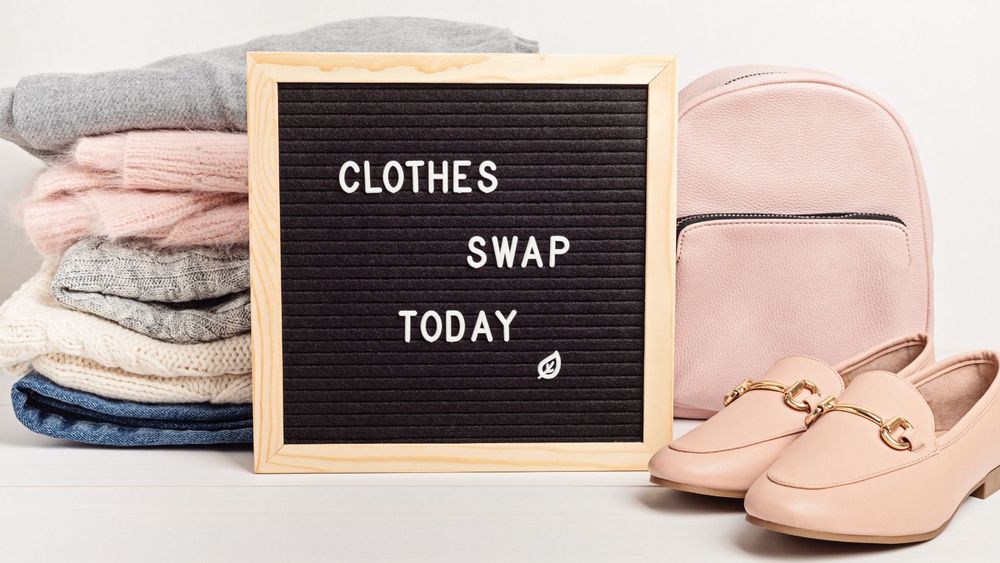Forget crypto: Clothes swapping is the new currency
Each person has an average of twenty six items of clothing that have never been worn. Approximately ninety-five per cent of clothes in landfill could have been re-used. Circular Economy Researcher, Rebecca Clube, highlights that even though fashion retailers are marketing their green strategies and efforts in recycling capabilities, the volumes of garments being produced has not noticeably decreased, so the conflict of the “underlying commercial objective persists: to sell more garments”.
Clothes swapping or swishing is an easy way to recycle unwanted garments and revamp your wardrobe sustainably: “swishing works like a giant clothes swap: you bring items you no longer wear and exchange them for something new-to-you!”
What do swishers want?
Fashion marketing expert Claudia E Henninger’s [et al.] research found that clothes swapping participants are driven by conscious consumption and “fashionability”, particularly retro trends. Individuals participate “to gain classic and/or traditional pieces of clothing that are seen to be retro and whilst trendy and preppy, do not go in and out of fashion easily.”
One participant in the study echoed a common sentiment: “I really like shopping for stuff that’s quite vintage, and it’s hard to find that in the high street… and you feel like you’re doing something good anyway.”
Organise clothes swapping parties
Ever eyed up your bestie’s gold hot pants? Get them to your clothes swapping party and explain that gold won’t go with their Edgar Poe phase. Set the rules and expectations before the party. You may sort the swishers’ clothes behind the scenes and decide on a ticketing system. West London Waste Authority has a dedicated site, getswishing.com, which explains the process in detail.
You can also keep it local by creating a social media page for your community. Love Your Clothes have a guide to making a local Facebook group.
Attend swishing events
Informally swapping between friends, family, and neighbours is nothing new. However, more formal community swapping is on the rise, particularly among ethical trend-setting consumers.
Chunmin Lang’s research highlights the benefits of this collaborative social-economic model by “sharing the cost of products and reducing the burden of ownership”; helping reduce waste. As well as confirming that consumers who are drawn to swapping score higher in leadership personality traits; their want for uniqueness equates with being “more open to new ideas, in an effort to differentiate from others.”
Keep an eye out for events with Eventbrite.
Digital swish
Consider apps and websites if you’re finding swapping in person inaccessible.
The clothes swapping app, Untagged expands your choice as you can swap with people outside your neighbourhood. “Instead of cash, your no-longer-loved clothing becomes the currency for buying something new-to-you.”
Don’t Shop, Swap specialise in high-quality, vintage & designer brands. Your unwanted clothes turn into swap coins you can spend.
How not to swish
Being a conscientious clothes swapper is key to fueling this circular fashion model. Henninger found that participants of events in the UK often had negative experiences such as lack of sizing, damaged and unwashed clothes, which put them off from returning. Interestingly, participants in Finland indicated that swap shop garments were of good quality, and the reasons for swapping were they no longer fitted, were unwanted presents or were worn for a one-off occasion.
So, to be a pro swapper, check that your items are clean and wearable. Additionally, good-quality items will encourage more people to become part of the community of swappers, which in turn should diversify sizing. You could also sign up to Oxfam’s #SecondHandSeptember campaign and go that extra mile to commit to sustainable shopping as a whole, not just our wardrobes.
For vintage and slow fashion brands check out slow fashion for your summer wardrobe and fashion doesn’t need to cost the Earth: exploring ethical vintage clothing.
